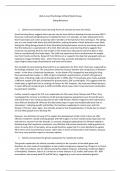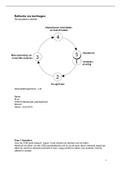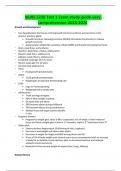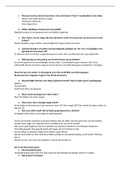Essay
A* AQA A-Level Psychology Eating Behaviour 16 Mark Model Essays
9 comprehensive, fully-developed exemplar essays (16 / 16 marks) covering questions that have appeared in past papers, as well as 6 predicted essays that haven't yet been asked in an exam, increasing the likelihood that they will appear as questions in the 2025 examination series. As well as featur...
[Show more]












